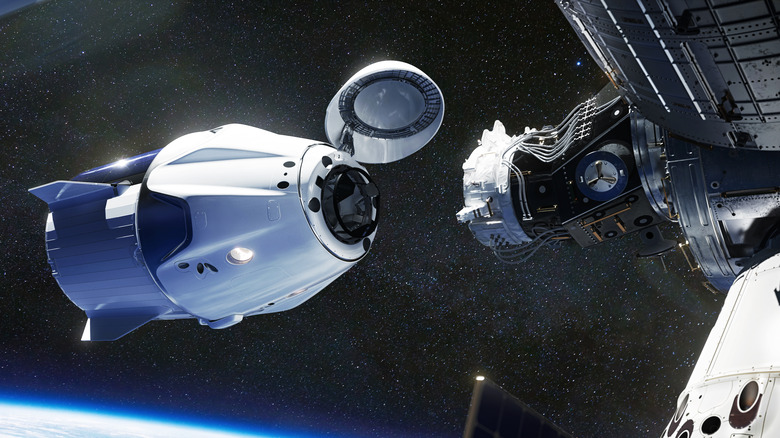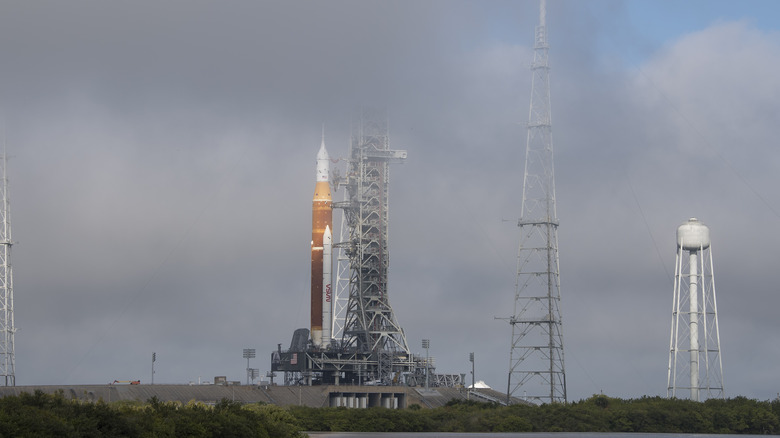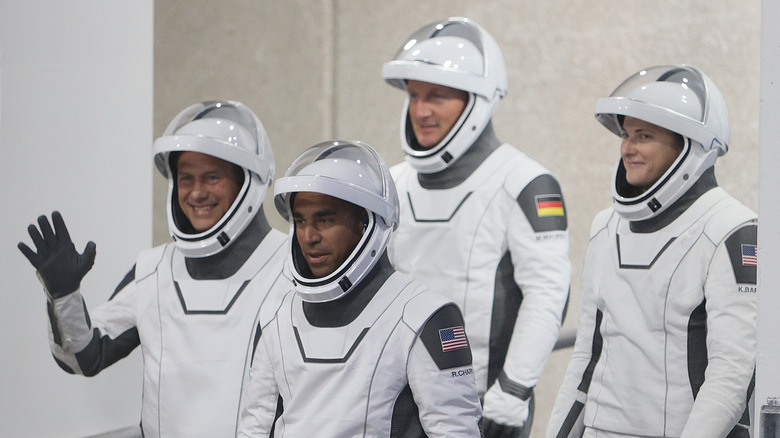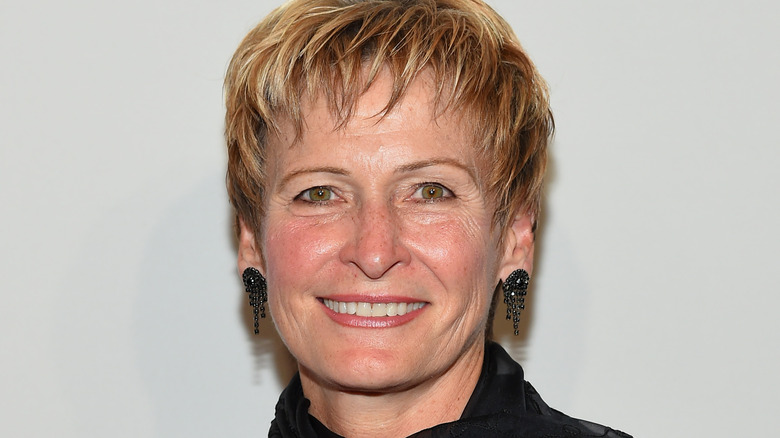The Medical Reason Male Astronauts Can Stay In Space Longer Than Females
Flying into space brings plenty of risks for astronauts. There's the possibility of gear and equipment malfunctions, which in the past has led to tragedies such as the 1986 Challenger disaster and, in 1967, the death of Soviet cosmonaut Vladmiri Komarov, according to Britannica. Other dangers include the potential medical risks of living for extended periods in low-gravity environments and the mental risks of isolation, according to Space Center Houston. But perhaps one of the biggest risks is that of radiation, according to Wired.
Radiation is normally associated with X-rays and atomic bombs, but it's actually found all around us, according to NASA. Radiation is a type of energy that can come in the form of rays or particles. Radiation from space is constantly streaming toward Earth, but our planet's magnetosphere and atmosphere block much of this radiation, significantly reducing the amount that reaches the planet's surface, according to Live Science. Up in space, though, astronauts don't have the same level of protection. While outside Earth's atmosphere, astronauts are exposed to significantly more radiation than their counterparts back home, a difference which increases astronauts' lifetime risk of dying from cancer. This risk has led NASA to impose restrictions on how long American astronauts can stay in space. And because men and women are affected by radiation differently, these policies vary, depending on the gender of the astronaut.
How much radiation astronauts are exposed to
On average, astronauts will be exposed to about 600 millisieverts of radiation over four six-month missions, or about 300 mSv per year in space, according to Live Science. On earth, people are exposed to around 3.6 mSv of radiation per year, meaning astronauts are exposed to about 100x as much radiation as usual while they're in space.
Exposure to radiation can cause a variety of health problems in addition to cancer. Because of this increased risk, most space agencies set limits for how long astronauts can go into space during their lifetimes. Some space agencies set this number at a set amount of radiation exposure that applies to all astronauts, according to The National Academies Press. The Canadian, European, and Russian space agencies are all examples of agencies that use dose-based limit systems, with rules in place specifying astronauts can be exposed to only 1,000 mSv of radiation over the course of their careers. However, NASA uses a slightly more complex system.
How NASA evaluates radiation risks
NASA evaluates radiation risks according to a percentage-based system, according to Live Science. Other space agencies which use a percentage-based system include the Japanese Aerospace Exploration Agency (via The National Academies Press). NASA evaluates the cancer risks for all astronauts using factors including age and gender. All astronauts can be exposed to radiation until their lifetime risk of dying from cancer increases by 3%. Once they reach this threshold, they can no longer go to space.
However, studies have shown that factors like age and gender can change how radiation affects cancer risks. When exposed to the same levels of radiation as men, women are twice as likely to develop lung cancer, meaning radiation can be more dangerous for women, according to Live Science. Subsequently, different radiation thresholds are set for male and female astronauts. Young women have the lowest permissible exposure to radiation at a threshold of only 180 mSv, while older men are allowed to stay in space until they have been exposed to as much as 600 mSv of radiation.
A proposed change to the rules
While NASA's standards are currently the exception to the rule among space agencies, the Americans may soon be adopting the more common blanket threshold. NASA recently proposed moving from a percentage-based risk system to a threshold of 600 mSv of exposure for all astronauts, according to Science.
Some experts have resisted this change as prioritizing the appearance of equality over science. But others have said the intentions behind the policy change are admirable. In the past, female astronauts have spoken out about the restrictions of current rules. Among them is Peggy Whiston, former chief of NASA's Astronaut Corps and a female astronaut herself. "A female will fly only 45 to 50% of the missions that a male can fly," she said, according to Space. "That's a pretty confining limit in terms of opportunity."
Other future changes to NASA's radiation restrictions might include an upping of the limit for all astronauts, as NASA plans for longer-haul missions. Among those might be missions to Mars, which will require astronauts to spend longer in space, according to Live Science.
Other differences between men and women in space
Differences in how male and female bodies respond to radiation is only one of the gender differences that affect male and female astronauts. For instance, men are more likely to get re-entry sickness than female astronauts, and they also experience more vision and hearing problems following re-entry than women astronauts, according to the BBC. However, women get sicker going into space, and they're more likely to feel faint upon reentry to Earth. These differences are subtle, and are not necessarily life-threatening in the same way that increased cancer risks from radiation are. However, they can still be of significant interest to scientists.
Moreover, other unique features of women have made them potentially better candidates for long space missions. One mock Mars mission showed that women burned less than half as many calories as the men, meaning female astronauts will likely need fewer provisions for their missions, according to the Solar System Exploration Research Virtual Institute. For extended voyages, like missions to Mars, this difference in calorie expenditures could significantly reduce the amount of provisions, and thus the amount of fuel, required for a mission, helping to make the trip more affordable.
Longest spaceflights for women and men
Though there are different standards for radiation exposure by men and women, women actually have an edge over male astronauts in terms of cumulative spacetime records. Peggy Whitson (above) holds the record for most cumulative spacetime for any NASA astronaut, with a total of 665 days in space, according to Space. These days in space were accumulated over three missions, the longest of which was 289 days long, according to NASA. The astronaut with the next-highest cumulative spacetime is Jeff Williams, who holds the record for the American man with the most cumulative space hours. Williams has accumulated more than 534 days in space.
However, for single spaceflights, men still come out on top. Scott Kelly holds the record for the single longest spaceflight by an American man, at 340 days. Christina Koch, who holds the women's record, comes in second, with a 328-day spaceflight, according to WBUR.





